Posts Tagged: Bees at the Bee
Nissa Coit: Ethyl Oleate Pheromone and Honey Bees
Interested in honey bee research? Then you'll want to attend--or listen via Zoom--the next seminar hosted by the UC Davis Department of...
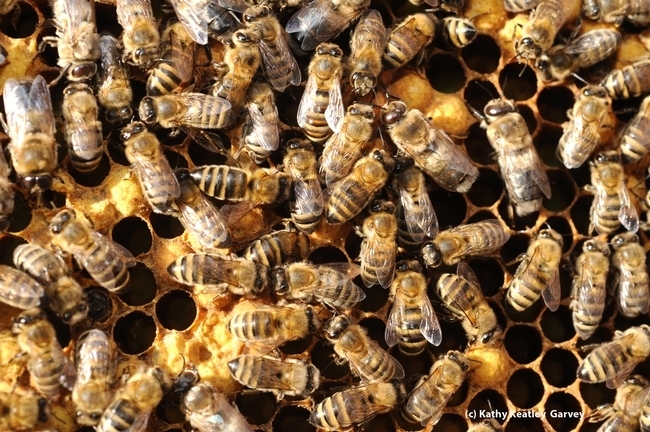
Close-up of honey bees in a spring colony. (Photo by Kathy Keatley Garvey)
Saving California's Bumble Bees: Become a Citizen Scientist
The late Robbin Thorp, UC Davis distinguished emeritus professor of entomology, would have been proud of the California Bumble Bee...
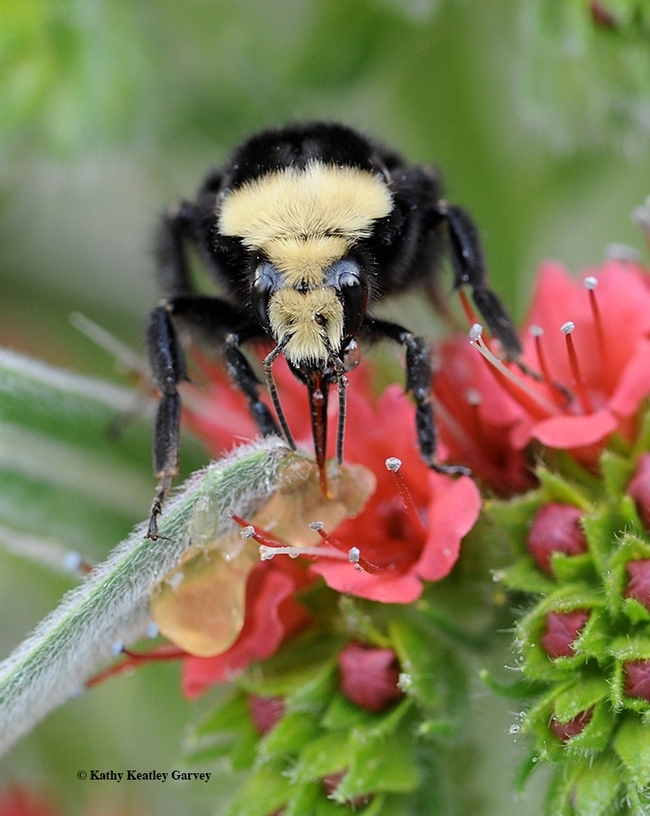
A yellow-faced bumble bee, Bombus vosnesenskii, foraging on a tower of jewels, Echium wildpretii. (Photo by Kathy Keatley Garvey)
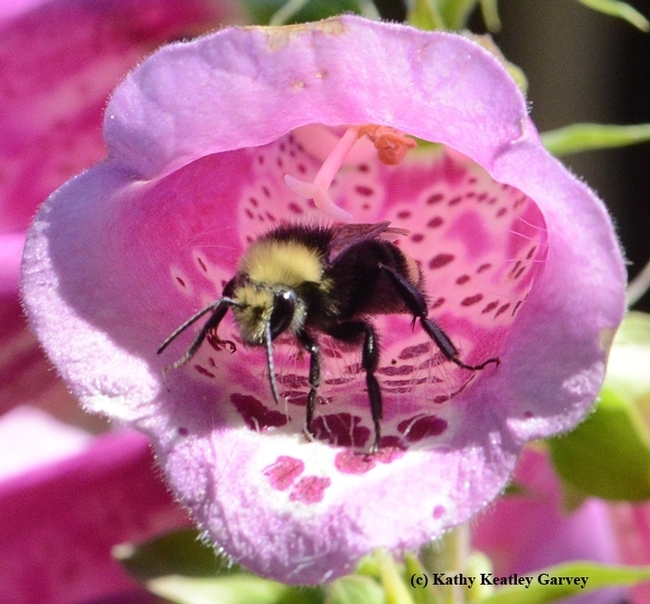
A yellow-faced bumble bee, Bombus vosnesenskii, foraging on foxgloves. (Photo by Kathy Keatley Garvey)
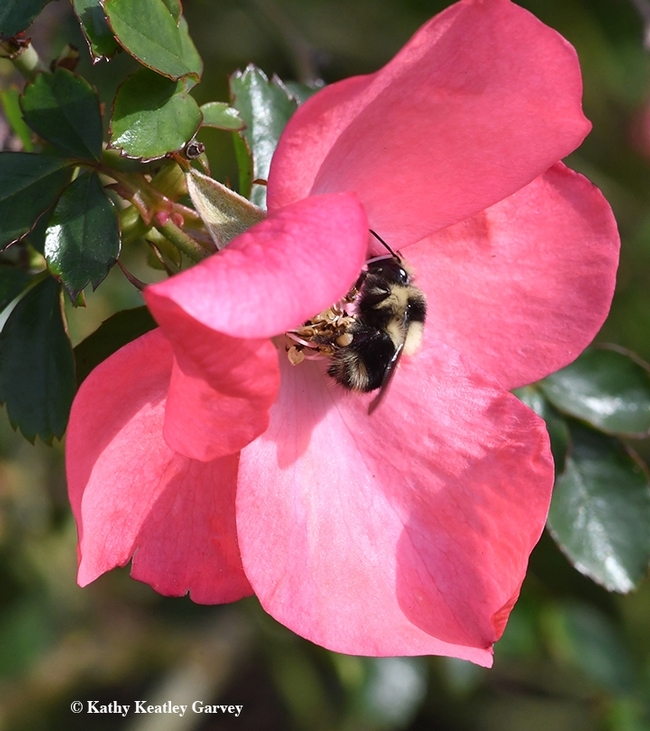
A black-tailed bumble bee, Bombus melanopygus, foraging on a rose. (Photo by Kathy Keatley Garvey)
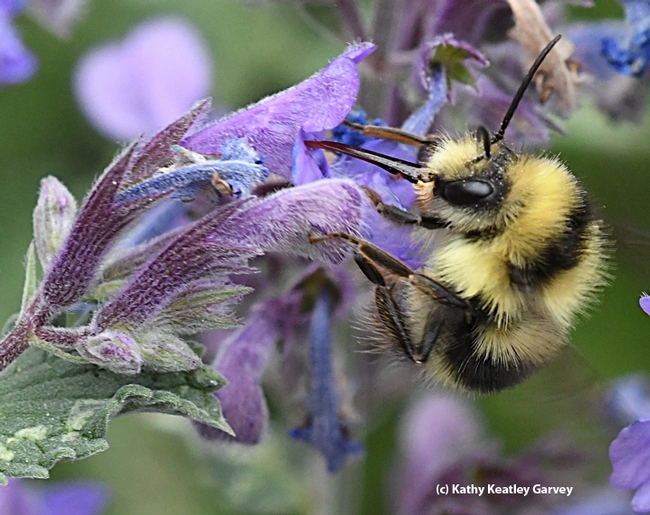
A male black-tailed bumble bee, Bombus melanopygus, foraging on a lavender. (Photo by Kathy Keatley Garvey)
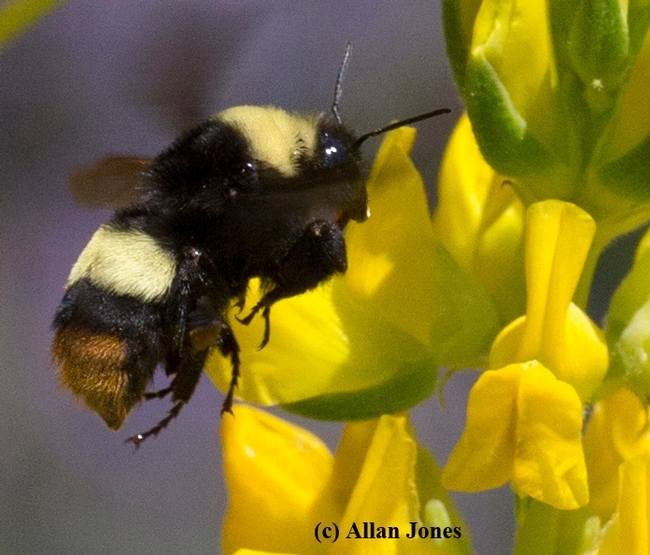
Bombus crotchii foraging in the UC Davis Arboretum and Public Garden. It has been named an endangered species due to the impacts of pesticides, climate change, and human development. (Photo by Allan Jones)
National Honey Bee Day: A Buzzworthy Day, Indeed
Hear that buzz? Are you ready for National Honey Bee Day? It's held the third Saturday of August and that's tomorrow. Launched in 2009 by a small...
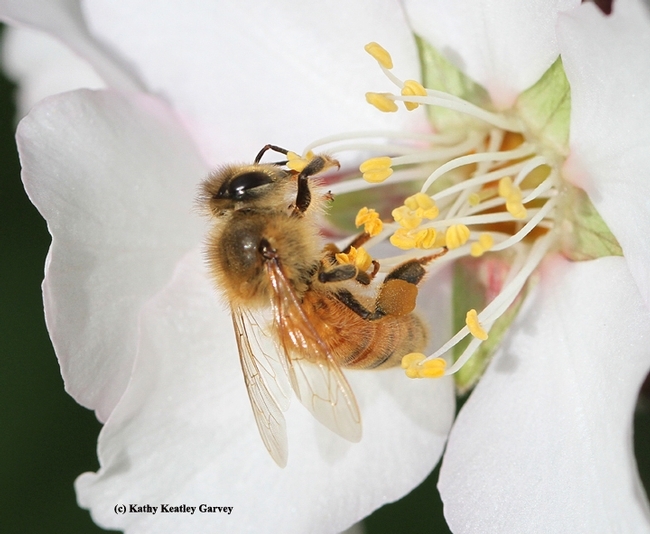
Honey bee pollinating an almond blossom. (Photo by Kathy Keatley Garvey)
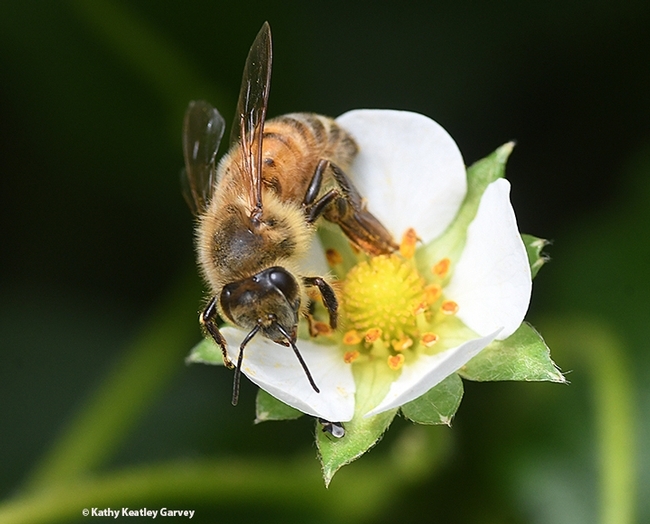
Honey bee pollinating a strawberry blossom. (Photo by Kathy Keatley Garvey)
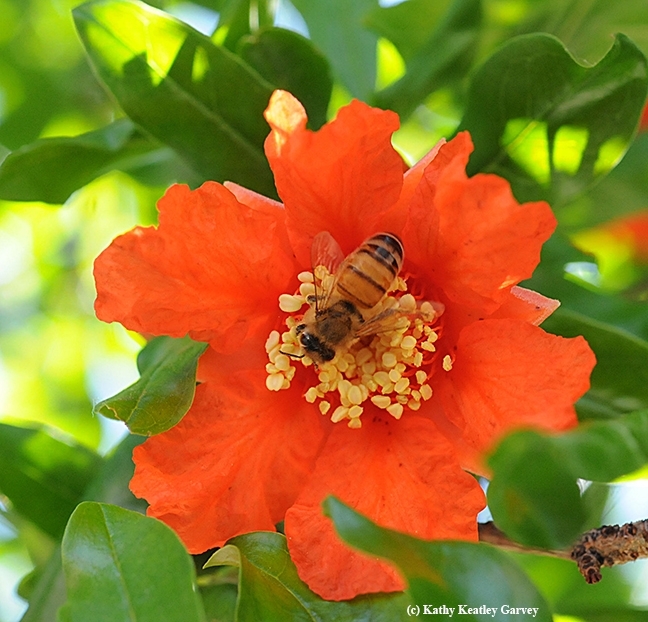
Honey bee pollinating a pomegranate blossom. (Photo by Kathy Keatley Garvey)
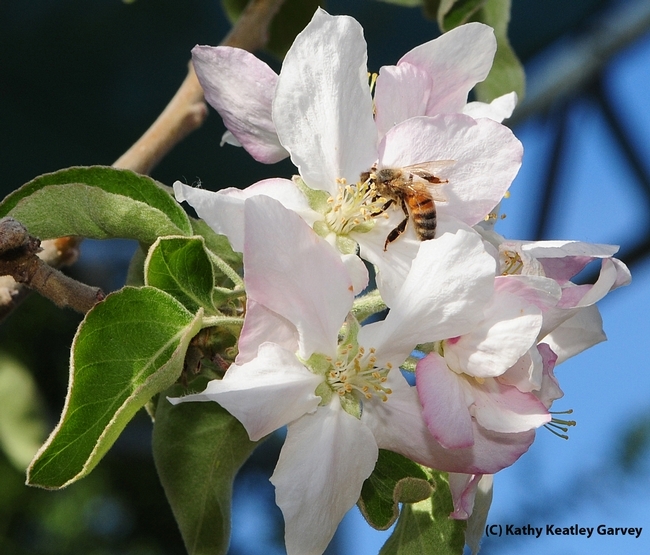
Honey bee pollinating an apple blossom. (Photo by Kathy Keatley Garvey)
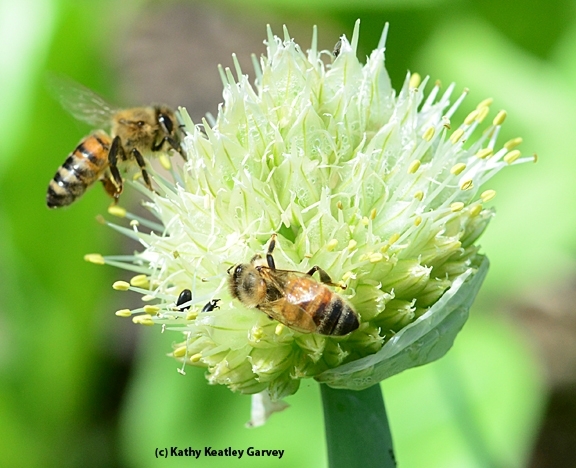
Honey bees pollinating an onion umbel (flowering head). (Photo by Kathy Keatley Garvey)
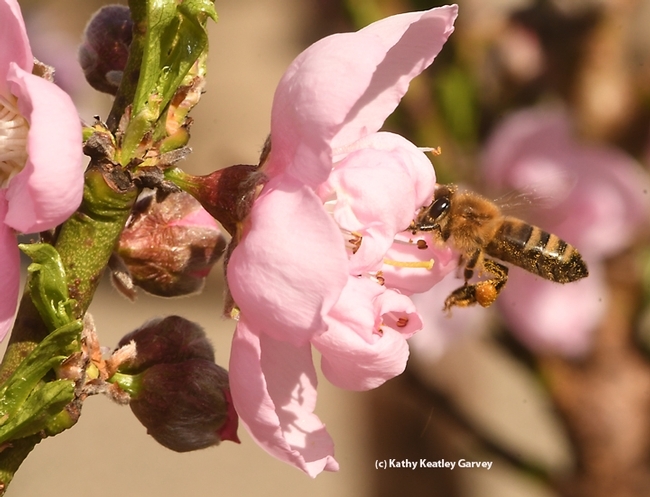
Honey bee pollinating a nectarine blossom. (Photo by Kathy Keatley Garvey)
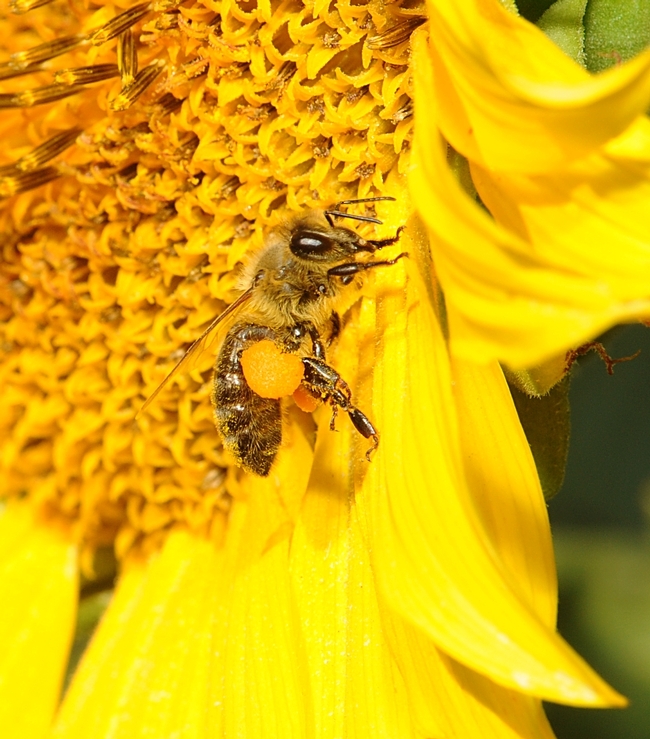
Honey bee pollinating a sunflower blossom. (Photo by Kathy Keatley Garvey)
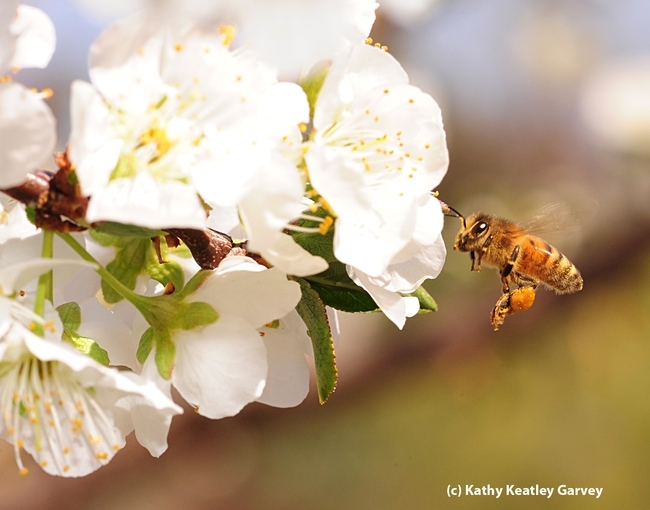
Honey bee heading toward a plum blossom. (Photo by Kathy Keatley Garvey)
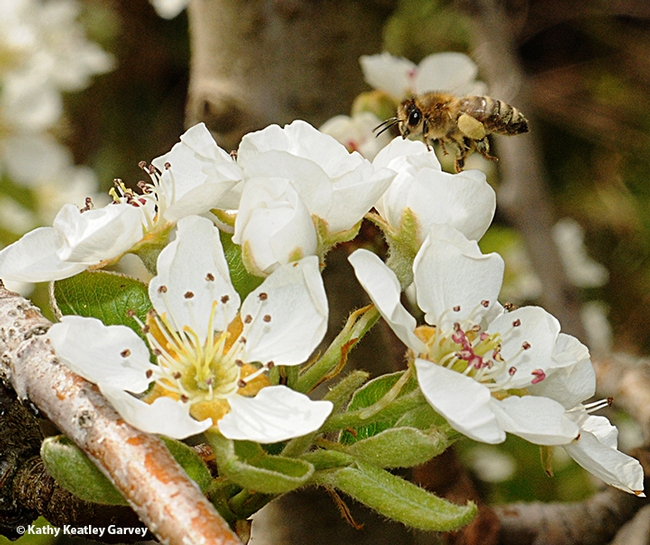
Honey bee pollinating pear blossoms. (Photo by Kathy Keatley Garvey)
A Honey of a Day--And It Gets Better!
Saturday, Aug. 19 promises to be a honey of a day--in more ways than one! And it gets better! It's National Honey Bee Day or National Honey Bee...
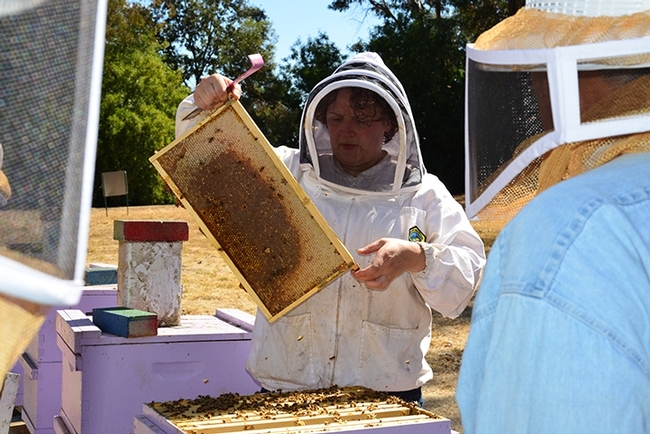
Extension apiculturist Elina Lastro Niño shows a frame to her class at the Harry H. Laidlaw Jr. Honey Bee Research Facility. (Photo by Kathy Keatley Garvey)
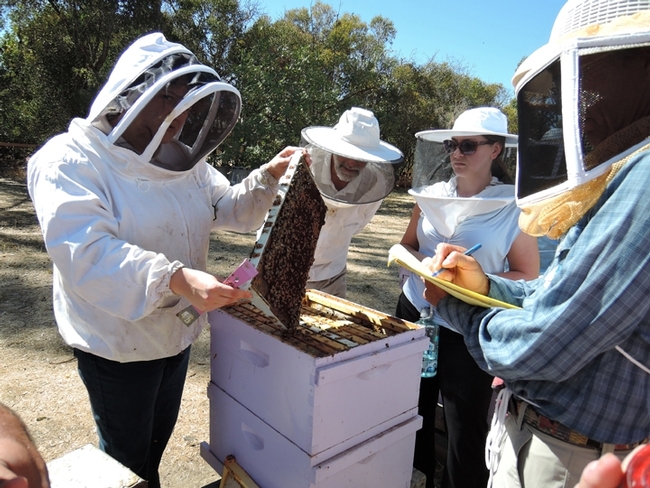
Students take notes as Extension apiculturist Elina Lastro Niño shows opens a hive at the Harry H. Laidlaw Jr. Honey Bee Research Facility. (Photo by Kathy Keatley Garvey)
Africanized Bees: How Far North?
Africanized honey bees arrived in southern California in 1994 and are expanding north. How far north are they now? That's the question being asked...
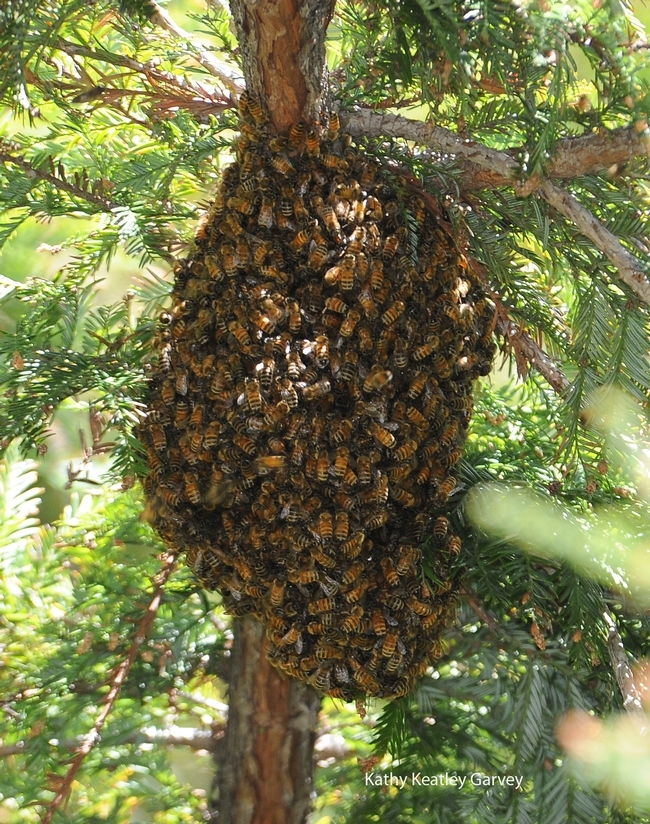
Collection of Africanized bee swarms can be an issue. These bees are European honey bees (not Africanized) that swarmed on the UC Davis North Hall/Dutton Hall complex in 2012. (Photo by Kathy Keatley Garvey)

Scientists are studying feral colonies for Africanized bee expansion. This photo was taken in 2011 in a Vacaville backyard; the European honey bee colony was a joy to the homeowner until its collapse. (Photo by Kathy Keatley Garvey)

